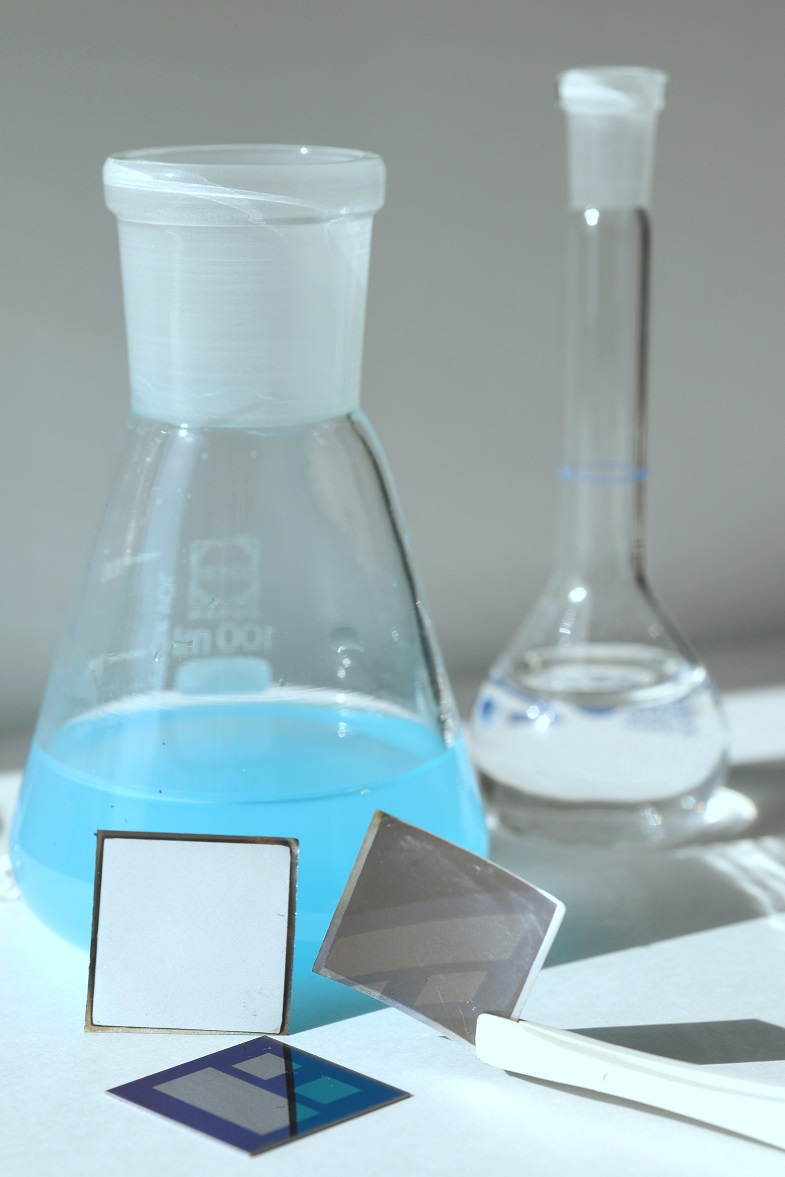Components of a tandem solar cell developed by EASi scientists: metallic precursor (white) of a novel epitaxially grown absorber layer (grey) and a Si-base cell (blue patterned).
Emmerthal (RNi). Yesterday, the kick-off meeting for the new research project EASi (“Epitaxial-free absorber for low-cost tandem solar cells on silicon”) took place at the Institute for Solar Energy Research in Hameln (ISFH), which is funded by the Federal Ministry of Economics and Energy (BMWi) with a sum of 1.7 million euros. The three-year project is supported by several partners from the solar industry.
A tandem solar cell uses a second absorber layer that optimally utilizes the higher-energy spectral range of the solar spectrum.
“This way, the physical efficiency limit of single solar cells can be circumvented, which makes tandem technology an attractive future perspective for photovoltaics,” explains Dr. Raphael Niepelt, who is in charge of the new project. Up to now, tandem solar cells can only be produced with very expensive processes, which limits their use to special cases such as space technology. In EASi, ISFH is now working on the development of cost-effective options for the production of tandem solar cells based on silicon in order to enable the use of this highly efficient technology on a broad scale.
“The prospective higher solar yield per area means that the already competitive electricity costs for photovoltaics can be significantly reduced once again,” says Prof. Rolf Brendel, Managing Director of the institute. “The objectives of the project are in line with the Institute’s long-term strategy of supporting our partners from industry in the development of highly efficient solar components,” continued Brendel.
ISFH is a non-profit limited liability company of the state of Lower Saxony and has been developing efficient solar systems with cost-effective components for 29 years now. The know-how and the outstanding research infrastructure developed here make ISFH an attractive partner for the solar industry, with which the institute cooperates in industrial and publicly funded research projects to support both the domestic economy and the worldwide use of solar energy.

